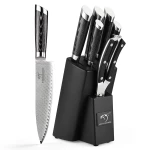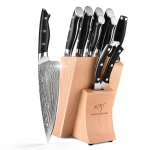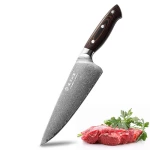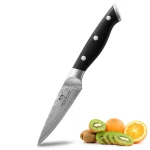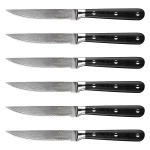Slicing and Dicing: Techniques for Perfectly Preparing Ingredients with Your Kitchen Knives

Mastery of slicing and dicing is the cornerstone of any skilled chef or home cook. The precision and consistency of these techniques can elevate your culinary creations to new heights. In this article, we will delve into the art of slicing and dicing, providing you with the essential skills and tips to perfectly prepare ingredients with your kitchen knives.
The Importance of Slicing and Dicing
Uniformity: Slicing and dicing ensure that ingredients are cut into uniform pieces. This uniformity leads to even cooking and a professional presentation.
Faster Cooking: Smaller, evenly cut pieces cook more quickly, reducing your time in the kitchen.
Balanced Flavors: Uniform cuts mean ingredients release their flavors at the same rate, resulting in a harmonious blend of tastes.
Slicing Techniques
1. Julienne: Julienne is a technique used to create thin, matchstick-like strips. Follow these steps:
Start by cutting the ingredient into long, rectangular pieces.
Stack the pieces and cut them into thin strips of the desired width.
2. Chiffonade: Chiffonade is commonly used for leafy greens and herbs. Here's how to do it:
Stack the leaves on top of each other.
Roll them into a cylinder shape.
Slice the cylinder into thin ribbons.
3. Bias or Diagonal Slices: This technique creates oval-shaped slices. To achieve bias slices:
Cut the ingredient at a slight angle rather than straight up and down.
4. Thin Slices: Thin slices are used for a variety of dishes, including sandwiches and salads. To create thin slices:
Cut the ingredient into very thin pieces.
Dicing Techniques
1. Small Dice (Brunoise): A small dice results in tiny, even cubes. Here's how to achieve it:
Start by creating julienne strips.
Stack the strips and cut them into tiny cubes.
2. Medium Dice: A medium dice yields slightly larger cubes. Follow these steps:
Begin by cutting the ingredient into strips.
Stack the strips and cut them into cubes of the desired size.
3. Large Dice: Large dice produces bigger cubes. To achieve it:
Begin by creating strips.
Stack the strips and cut them into cubes, which are larger than those in a medium dice.
4. Fine Dice (Mirepoix): Fine dice results in smaller, uniform cubes. Here's how to do it:
Start by creating a small dice.
Stack the cubes and cut them into even smaller pieces.
5. Julianne (for square dices): Julianne can be further diced into smaller cubes:
After creating julienne strips, stack them and cut into smaller cubes.
Tips for Perfect Slicing and Dicing
Sharp Knife: A sharp knife is crucial for precise cuts. Regularly hone and sharpen your knife to maintain its edge.
Consistent Size: Keep the size of your cuts consistent to ensure even cooking.
Proper Hand Placement: Use the "claw grip" to protect your fingers. Curl your fingertips inward while holding the food with the rest of your fingers.
Guiding Hand: Use your free hand to guide the ingredient while keeping your fingertips tucked away.
Practice: Slicing and dicing is a skill that improves with practice. Start with simpler ingredients and gradually work your way up to more complex ones.
Safety: Pay attention to safety to avoid accidents. Keep your knife sharp, focus on the task at hand, and use a stable cutting surface.
Perfecting your slicing and dicing techniques is a rewarding journey that enhances your cooking skills and the presentation of your dishes. With practice and the right knife skills, you'll soon be creating restaurant-quality meals in your own kitchen.

